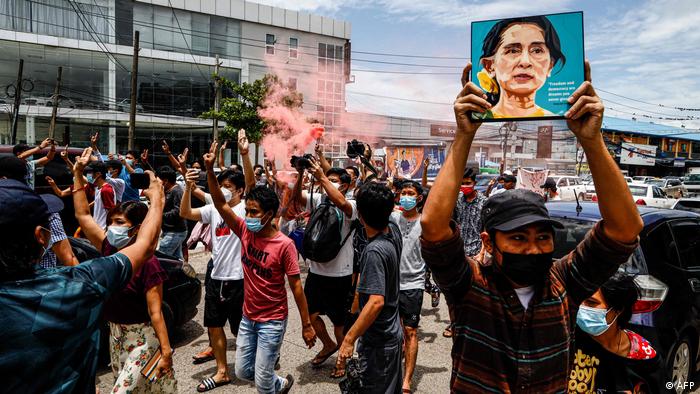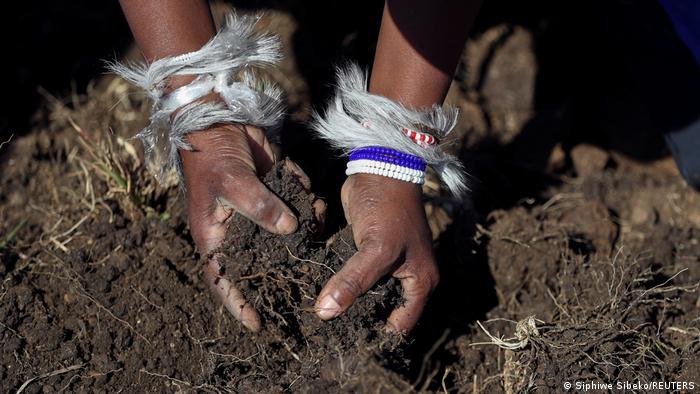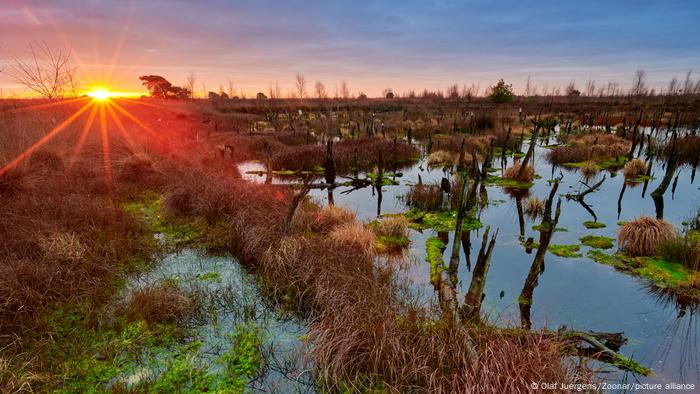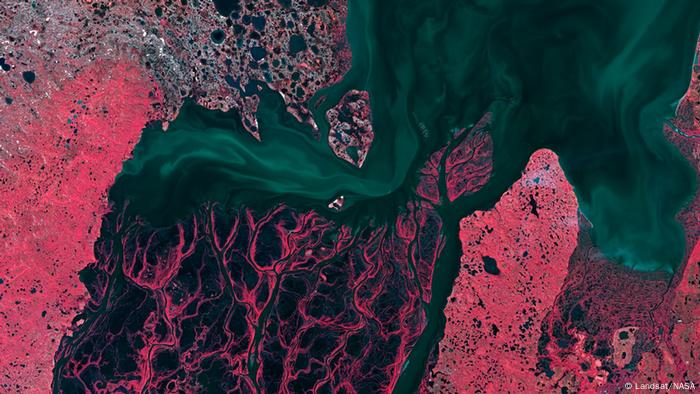Sat, December 4, 2021, 1:46 AM·12 min read
We recently asked the former Christians of the BuzzFeed Community to tell us what was their turning point to leave the religion. Here are some of their insightful stories:
Warning: This post contains topics of sexual assault and suicide.
1."The breaking point for me was when the pastor of the church I was attending went on a rant about abortion and ended it with 'The holocaust that is currently happening in the United States makes it look like Hitler was playing in the sandbox!'"
"After picking my jaw up off the floor, I got up and left and never looked back."
—samk35

Monashee Frantz / Getty Images
2."I grew up in an EXTREMELY religious Roman Catholic household and right after my first suicide attempt, I had woken up in the hospital after being unconscious. My parents were sitting in the room and instead of comforting me or saying absolutely anything my father just said, 'You do know suicide is a sin? If you had been successful, you would've been in hell.'"
"I was 15. That was the moment that I realized I will never believe in God or any organized religion again."
—cracklinrosie
3."A priest told me that the reason I developed an autoimmune condition was because I wasn't living a life free from sin and it was my punishment. He said one of those sins was wearing a short skirt (not in church) because I was tempting men to have impure thoughts. Bye-bye church."
—kayblu02

Godong / Getty Images
4."I attended church as a teenager and among the many, many issues I had with them, there were two final straws for me which made me leave the Christian belief system. First was when the youth leaders locked me in a room and yelled at me for losing my virginity."
"The second was when they organized a church get-together which involved a two-hour 'motivational talk' from a 'reformed homosexual' who basically told everyone that being gay is a death sentence. That killed it for me because there could have been kids there looking for guidance and acceptance being in that situation and you've just told them they should die."
—Anonymous
5."When I got pregnant at 16, most of my church turned their backs on me. My decision to leave the faith was further confirmed when I realized that they knew about the child abuse my siblings and I were subjected to yet did nothing."
"I’ve now been married for over 20 years to my husband (the father of my child), with two adult children who are amazing. I’ve exposed them to multiple religions and allowed them to make their own decisions, with neither opting to join any organized religion. Both are amazing, kind, and caring and I have no regrets."
—Anonymous

Skaman306 / Getty Images
6."My spouse and I were having marital problems. I was told to go back into the house without dealing with our problems, or the pastor would excommunicate me."
—Anonymous
7."The turning point for me was when I realized that my sexual assault could have been prevented if I had better understood sex and consent. Being taught abstinence prevented me from coming forward because I was told early on that if I had sex before marriage I was dirty and it was a sin."
—Anonymous
8."A priest told me I should only have friends who shared my faith after I told him my best friend was Jewish. I had been moving away from religion for a while, but that was the last straw."
—juliel4e89ecc7d

Sébastien Désarmaux / Getty Images
9."I was born with a physical disability and was bullied continuously until high school. My parents are devout Christians and they never did anything to help me. Even when I would come home every day crying, they said that it was all part of 'God’s plan.'"
"The bullying was even worse at church, and again, no one, not even the Bible study teachers, stepped in to stop it. When I felt suicidal in sixth grade, my parents screamed as if I were the devil and threatened to disown me. I quickly shut up after that but suffered alone in silence."
—eternalrealms
10."When I was 12, my parents sent me to a Christian summer camp for a week. The counselors always told us to talk to them if we had any questions. One night after the campfire, I told one of them that I understood sex outside of marriage was bad, but what about all the other stuff? The counselor asked me what other stuff, and I (very foolishly) explained first, second, and third base."
"She asked me how I knew that, and I told her it from the advice section of gurl.com (doesn’t exist anymore, but it was an excellent resource for pre-teen and teen girls). Then she proceeded to go back to our cabin and tell all the other campers and counselors that I was a pervert. I had been pretty involved in our church before that, but after that I was done."
—sadielady3

Lokibaho / Getty Images/iStockphoto
11."Once COVID hit and my church actively denied science and talked about the 'evil' vaccines, I had to walk away completely."
"How could leaders of a religion preach a message that was actively putting their congregation in danger and still claim to be Christians? It went against everything they claimed to believe so I realized that their beliefs weren't real for them so why should they be real to me."
—Anonymous
12."While I was visiting my parents’ rural Georgia megachurch one Easter, the pastor went off sermon for a full 20 minutes about the 'abomination of homosexuality.' I’m bisexual and so is my wife."
"I just remember my wife squeezing my hand as the pastor was scream-rallying to a sanctuary of red-faced, full-neck, vein bulging amen-sayers, especially when he was mocking the community as the 'LGBTQ-A-B-C-D-E-F-G…' He went through the whole alphabet spewing hate and everyone was roaring with laughter. The whole congregation was amped. I looked over at my parents and they were nodding emphatically."
—sweetbref

Unknown / Getty Images
13."My Christian uncle assaulted me on and off until I was 32. I had never allowed myself to believe it actually happened because he and his wife were the whole reason I was a believer. After I told my family, they believed me and were supportive...until I told others. I shared my experiences with other survivors to support them. My Christian family freaked out."
"They all turned on me and said it should have been kept 'in the family' since I had forgiven him. I do not believe there is EVER a time a victim of abuse should be quiet about it. These people still have high standing in the church and have families and children in their home who have no idea what he is. I refuse to believe their way is right. Forgiveness does not mean there aren't consequences."
—thekimmer1234
14."What made me think something wasn't right was when the church ostracized me for getting pregnant outside of wedlock, and slut shamed me. The last straw was when my religious father told me it was my fault I was abused, and punishment for my sin. I told him and evangelical Christianity to fuck all the way completely off, and never looked back."
"I grew up fundamentalist Christian. It felt like an abusive relationship. I would sin, I would be reminded what a terrible person I was, and if I begged and pleaded, God would *maybe* think about taking me back. I was also taught nothing but obedience to my parents, but especially my father. My father was God's representative on earth, and when I got married, his authority would transfer to my husband. Then I was expected to submit unto my husband."
—elizabethannez
15."My college roommate and I attended the same church as kids. I always thought it was a warm and welcoming place. However, she told me when her dad cheated on her mom, abused her, and left her to raise three kids on her own. The church made her mom feel guilty about it like it was her fault."
"They offered no support and encouraged her to take him back. It opened my eyes to the abuse and neglect of women in the faith as well as the hypocrisy."
—seekyou

D-keine / Getty Images
16."I, a white female, went to a high school dance with a Black boy. When I told my mom who was taking me to the dance, she said it was unacceptable for me to go with someone of a different race because the bible says, 'Birds should only be with other birds and bees should only be with other bees.'"
"She used Christianity to justify her position against interracial relationships and compared people of different races like they’re different species. That was the turning point for me."
—Anonymous
17."My parents were getting divorced, I went to see my youth leader to ask why God wasn’t answering my prayers to just help my mom stop crying everyday. She said, 'Well, sometimes God answers big prayers and sometimes he answers little prayers. Just yesterday I asked him to give me a front parking spot at the grocery store and I got one!'"
"It was my *come to Jesus* moment of why Catholicism is rooted in selfishness. God is there in the good times but he leaves you to your own devices in the bad? Nah."
—Anonymous

Pascal Deloche / Getty Images
18."My journey to leaving was a long time coming, but the big event I can point to was the church's response to the George Floyd protests. Their statement was full of white denial and tone policing and it didn't sit right with me. That's when I really started asking questions and learned about Mormonism's true origins and all of their lies, brainwashing, and atrocities."
"From there I started seeing those same problems with Christianity in general and once you see those things you can't unsee them. At this point I don't have any sort of solid belief system, but I don't think I'll ever go back to any sort of organized religion, but especially not Christianity."
—Anonymous
19."For me, it was the hypocrisy of the Christian faith. I got married outside the church and was told that it wouldn't be recognized by God because it needed to be in the church, even though God is omnipresent? It made no sense."
—Anonymous

Hinterhaus Productions / Getty Images
20."I lost my brother to cancer when he was 15 (I was 6). The response given to me was that 'He must have been so good that God needed him in heaven.' I then lost my father to cancer when I was 13 and on the day before his funeral, two of my teachers tried to comfort me by saying that 'He wanted to go and be with (my brother) in heaven.'"
"What in the world made them think that was an okay thing to say to a child who had just lost her father? After that I called bullshit. Even if there was a God, I wanted nothing to do with them if they could do something as horrible as that to a family."
—Anonymous
21."For me, it was how they treated my mother when my parents divorced. They placed all the blame on her. Mom wasn’t perfect, but my dad played a big part in it as well. It takes two to tango."
—Anonymous
22."I was 13, active in a Southern Baptist church, best friends with the preacher's kids, never missed a youth group meeting, studied to teach Bible study when I was able, helped with VBS, the whole 9 yards. We had a 'fall festival' (because we can't celebrate Halloween) with a hayride and I FELL OFF AND WAS RUN OVER. There was a whole fight with the insurance company to get bills covered and church members fighting against me while I had to reconstruct my cheek and learn to walk again."
"When I returned to church months later, there was a 'business meeting' instead of service that everyone had to attend. Why would children need to be there? Because they wanted to discuss 'removing insurance liabilities' AKA me. At 13, I jumped up and said 'I can fix that for ya' and walked out of the building. I tried a couple of other churches later in my teens, but that was definitely the beginning of my distaste of organized religion."
—belle82

Donald Iain Smith / Getty Images
23."I was leaning away from Christianity since I was 11 but my final turning point happened in my early 20s. Mom took me to a play being held at a church and it was mostly about what you’d expect: Various sins acted out and the sinners going to hell while the righteous going to meet Jesus. One segment though really got to me."
"A mom was driving her teenage daughter to church and the daughter asked her mom to go to church with her to which the mom replied that she couldn’t because she had to work that day. They get hit by a car driven by some drunk boys and the boys and the mom die. The boys get dragged to the fires of hell, but then after a minute so did the mom because she chose to go to work instead of church. The daughter was crying when that happened but as soon as Jesus showed up everything was sunshine and rainbows. There was no way I could follow any religion that faults a mother for providing for her child."
—nightmareampersand
24."A church elder told me that my disability would disappear if I prayed harder."
—Anonymous
25."My pastor told me I should get my act together if I wanted to amount to anything. At the time I was working around 60 hours a week and studying part time."
"I was literally clawing my way out of poverty but because mommy and daddy weren't loaded and I didn't fit into the image the church wanted to portray. I never went back."
—Anonymous

Seventyfour / Getty Images/iStockphoto
26.And "I was conned into attending a retreat in college and one of the leaders started his little sermon about how God made everything happen for a reason, and therefore God elected Trump so if we didn’t obey Trump, we weren’t obeying God. I got up and walked out."
—Anonymous
Submissions have been edited for length and/or clarity.













